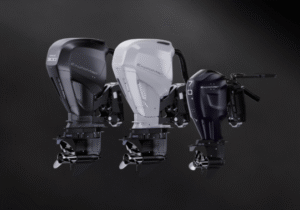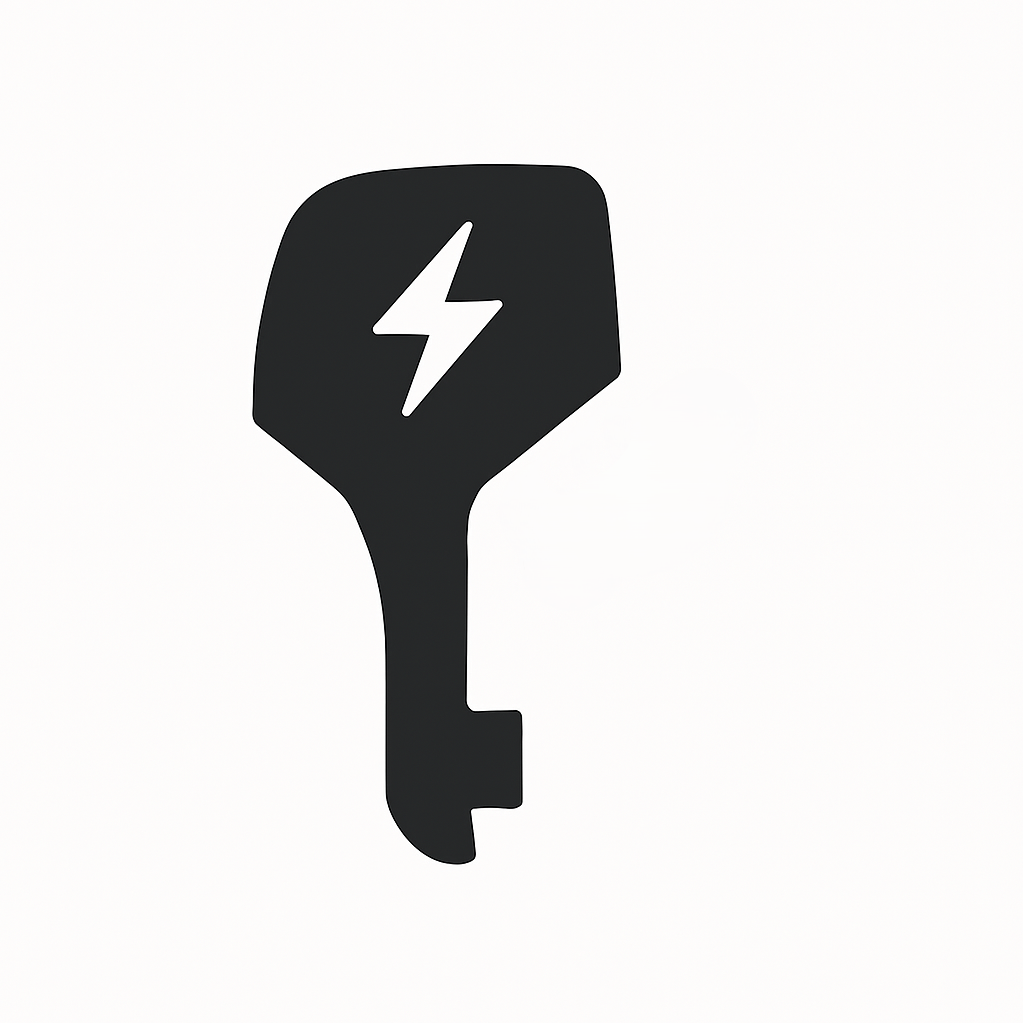Conventional vs Electric: Which Outboard Motor Batteries Are Better?
If you are a boater in the UK, you may feel lost when choosing the right outboard motor batteries. Should you go for a conventional lead-acid battery, an AGM, or invest in the latest lithium marine batteries? Each option promises something different—price, performance, safety, sustainability, and even how easy it is to charge at British marinas. The more you search, the more complex it seems. This guide is here to make it clear.
We’ll break down the differences between conventional and electrical battery options, explain how to match your boat size and horsepower to the right chemistry, and show you what is practical and available across the world in 2025.
What Kind of Outboard Motor Batteries Are Available in 2025
Electrical batteries vs conventional batteries
1. Conventional Batteries
Conventional marine batteries are most commonly lead-acid batteries. They have been the default choice for decades due to their reliability and low upfront cost. Typically, they are divided into two types: flooded lead-acid and AGM (Absorbed Glass Mat). In the UK market, you will often find these used in small fishing boats and older petrol-driven outboards. For many first-time buyers comparing outboard motor batteries, this category is the starting point.
But conventional batteries have limited energy density. A lead-acid battery usually offers around 30–40 Wh/kg, which means you need more weight on board to get the same range compared with modern electric options. This can reduce efficiency, especially if you want to switch to an electric outboard motor with battery for longer cruising times. When weighed against lithium-based outboard motor batteries, the weight penalty is often the deciding factor.
2. Electrical Batteries
Electrical batteries, especially lithium-ion and semi-solid options, represent the modern evolution of outboard motor marine batteries. They are lighter, more energy-dense, and last much longer compared to conventional types. Lithium-ion batteries in 2025 typically offer 150–250 Wh/kg, up to 5 times higher than lead-acid. This allows electric outboard motor systems to deliver longer run-time and more reliable power, making them ideal for day trips and fishing on larger UK lakes such as Windermere. For boaters researching outboard motor batteries, these numbers are a practical benchmark.
While initial costs are higher, often ranging from £800 to £2,000 per battery pack, their lifespan is significantly longer. Most quality marine-grade lithium batteries last 8–12 years or up to 3,000 charge cycles (source: International Council on Clean Transportation, 2025). They also require little to no maintenance, making them more convenient for boaters who prefer plug-and-play solutions. This lower upkeep is a major reason many UK owners upgrade their outboard motor batteries to lithium.
Another advantage is integration with smart systems. Many lithium outboard batteries connect with apps or onboard screens to show state of charge, health, and remaining range. This is particularly valuable for UK sailors who want certainty in tidal waters, where power reliability is critical. Smarter outboard motor batteries translate to fewer surprises on the water.
| Battery Type | Average Lifespan (cycles) | Weight (kg per kWh) | Cost per kWh (£) | Suitability |
|---|---|---|---|---|
| Lead Acid (AGM) | 400–600 | 25–30 | £150–£200 | Short trips, low budget; entry-level outboard motor batteries |
| Lithium Iron Phosphate (LiFePO4) | 2,500–4,000 | 10–12 | £350–£500 | Leisure boating, fishing, cruising; upgrade path for outboard motor batteries |
| Semi-Solid State | 4,000–6,000 | 8–10 | £500–£700 | Long-range, premium electric outboards; high-spec outboard motor batteries |
Sources: RYA guidance on electric boating and lithium system considerations; UK marine market commentary on LiFePO4 benefits (energy density/deep cycling).
The Importance of batteries for outboards
Your propulsion, range, weight distribution and onboard electrics all hinge on your battery bank. The wrong choice can mean sluggish hole-shot, early voltage sag, shorter range in head seas, and premature capacity loss after repeated deep discharges. Choosing the right outboard motor batteries is therefore a core safety and performance decision.
Power Source and Performance
For an electric outboard motor with battery, the battery provides the equivalent of a fuel tank. The type and capacity of the battery you select determines how long you can cruise, how much torque you can expect when accelerating, and how smooth the ride feels. A 10 kWh lithium battery, for example, can provide an average run time of 4–5 hours at moderate speed, while a smaller 5 kWh pack may only sustain 2 hours (source: UK Marine Energy Association, 2025). The bigger the energy storage, the greater your freedom on the water. In practice, higher-capacity outboard motor batteries often mean fewer compromises on route planning.
Reliability and Safety at Sea
Marine environments are unpredictable. Waves, salt exposure, and temperature changes can put stress on your propulsion system. Modern outboard motor batteries equipped with battery management systems (BMS) enhance safety. The systems prevent overcharging, deep discharging, and thermal runaway. According to the Royal Yachting Association (RYA, 2025), batteries with an integrated BMS reduce the risk of failure by up to 40% compared with older sealed lead-acid designs. Well-managed outboard motor batteries also maintain consistent thrust as state-of-charge drops.
Conventional VS Electric Boat Motor Batteries
1. Energy Density
Energy density is the dominant differentiator. A lithium propulsion bank typically delivers more usable watt-hours per kilogram than lead-acid, allowing you to carry less weight for the same range or increase range without overwhelming the transom. For small planing hulls and RIBs, that weight saving can materially improve acceleration and efficiency, especially in choppy UK coastal conditions. LiFePO4 packs also maintain a flatter voltage under load, which protects thrust as the state-of-charge drops. This is why many skippers replace legacy outboard motor batteries with lithium packs.
2. Battery Life
Cycle life under deep-discharge is where lithium excels. Typical lead-acid deep-cycle banks deliver hundreds of cycles before meaningful capacity loss, whereas LiFePO4 systems are commonly specified in the low thousands (often cited in the 2,000–5,000 cycle range under appropriate charge/discharge conditions). That longevity translates to fewer mid-life replacements over a long ownership horizon. Longer-lasting outboard motor batteries reduce both downtime and waste.
3. Cost Efficiency
While conventional batteries are cheaper upfront, true value is better expressed as £ per usable cycle. A simple rule of thumb is: Cost per cycle = Pack price ÷ warranted cycle count at stated depth-of-discharge. Lithium’s higher purchase price can still be cost-effective across 5–10 seasons if you regularly run deep cycles for propulsion. If you mostly day-hop with light house loads, conventional may remain sensible. (Always pair your bank with a purpose-built marine battery charger to protect cycle life.) Evaluated this way, premium outboard motor batteries often pay back faster than expected.
4. Sustainability
Electric outboards eliminate direct exhaust emissions and cut noise, improving air quality and onboard comfort. On end-of-life, UK waste controls matter: lead-acid battery casings may contain persistent organic pollutants (POPs), and handlers must follow Environment Agency rules; reputable marinas and chandlers can direct you to authorised facilities. Responsible end-of-life for outboard motor batteries is part of the total ownership plan.
5. Safety
Both chemistries are safe when correctly installed, but failure modes differ. Lead-acid risks include acid spills and hydrogen venting during improper charging. Lithium risks centre on thermal runaway if a cell is abused or poorly managed. UK guidance stresses using quality BMS hardware, adequate cooling and manufacturer-approved chargers. Choosing certified components for your outboard motor batteries is as important as choosing capacity.
6. Maintenance
Conventional banks may require electrolyte checks (flooded), corrosion management and equalisation schedules. Lithium propulsion banks largely remove routine maintenance but demand correct charge profiles, temperature monitoring and periodic firmware/BMS checks. Charging realities in the UK: AC shore power (e.g., 230V/16A) dominates in marinas and typically implies overnight top-ups; dedicated marine DC fast charging exists in corridors and pilots but remains unevenly distributed. Good maintenance habits extend the life of all outboard motor batteries.
7. Noise
Electric drive is near-silent at displacement speeds and markedly quieter at planing, which improves wildlife experiences on the Broads and Scottish lochs and reduces fatigue at the helm. Quiet operation also helps early-morning anglers and sailing clubs where noise discipline is appreciated. (Always observe local navigation byelaws regarding speed and wash.) Quieter outboard motor batteries systems enhance comfort for crew and passengers alike.
Which Outboard Supports Electrical Batteries?
ExploMar

ExploMar positions itself around high-torque electric propulsion systems. ExploMar specialises in high-power, high-torque electric outboard propulsion systems ranging from 70HP up to 1200HP, making it one of the most capable solutions in the marine market. For UK buyers, the key advantage lies in ExploMar’s modular marine battery architecture: semi-solid state and NMC battery packs designed for deep cycle operation, high energy density, and long service life.
For UK buyers, the appeal is modular battery architecture and a systems approach—motor, outboard motor batteries pack, controls and marine battery charger integrated for predictable range. Confirm UKCA marking, installation partners, and insurer acceptance; ask for verified cycle-life data at the depth-of-discharge you intend to use most often. With ExploMar, many customers report smoother upgrades from legacy outboard motor batteries to integrated lithium systems.
Mercury Avator
Mercury’s Avator family focuses on accessible electric boating, including small-craft units (e.g., 7.5e) with swappable batteries and higher-power models (20e, 35e). Independent tests on the 7.5e have published example ranges—on a light 13-ft hull, about 60 minutes (≈5 miles) at full throttle with a 1 kWh pack, or up to 19 hours (≈34 miles) at 25% throttle—illustrating how hull, throttle and battery capacity determine real-world range. For UK users on canals and lakes, the quiet, low-maintenance package is a strong fit; ensure spares/servicing via local Mercury dealers. Avator is a practical gateway for boaters exploring electric outboard motor batteries for the first time.
Acelpower
Acelpower targets the mid-power segment with integrated control electronics and modular battery layouts—useful for balancing range and weight in small planing hulls. As with any system, check BMS specs, ingress protection, charger compatibility and whether UK installation partners can commission the system to insurer-accepted standards. Request documented UK case studies (vessel type, battery capacity, cruising profile) before committing. For many owners, Acelpower’s proposition sits between budget lead-acid outboard motor batteries and premium lithium systems.
How to Choose the Right Electrical Outboard?
Assessing Your Boat Size and Power Requirements
Begin with honest duty-cycle assumptions. Convert power to comparable units (1 hp ≈ 0.746 kW) and estimate average load rather than peak. A 10 hp (≈7.5 kW) electric unit on a light dinghy may cruise at ~40–60% of rated power; a heavier RIB pushing tide and chop may sit closer to 70–80%. If you primarily operate on inland waterways with speed limits, average loads trend lower; coastal hops often demand more headroom. Size the electric outboard motor battery so you can complete your normal outing plus a prudent reserve. Right-sizing your outboard motor batteries prevents range anxiety.
Understanding Battery Compatibility and Range
Build a simple energy budget: Required energy (kWh) = Average power draw (kW) × Hours underway ÷ System efficiency. Example: a 5 kW draw for 2 hours at 90% system efficiency suggests ≈11.1 kWh usable. If your chemistry recommends keeping 10–20% in reserve to extend cycle life, your nominal bank should exceed that figure. For lead-acid, remember usable capacity at sustained higher currents is lower than the nameplate due to Peukert effects; lithium holds voltage better across the discharge window, yielding more consistent thrust late in the trip. This is a practical way to compare outboard motor batteries before purchase.
Evaluating Charging Solutions and Infrastructure
Plan for where and how you will recharge. In most UK marinas, AC shore power remains the norm, with “full” charges commonly taking on the order of eight to ten hours depending on charger and bank size—well-suited to overnight top-ups. Dedicated marine DC charging projects are live in corridors such as the south-coast “Electric Seaway”, but coverage is still developing; check your home and destination ports. If your use-case relies on rapid turnarounds, consider modular packs or spare modules for swappable systems. This planning ensures your outboard motor batteries fit your timetable, not the other way round.
Considering Maintenance and System Integration
Prefer packages where the motor, outboard motor marine batteries, BMS and marine battery charger are designed to work together. This reduces compatibility headaches, simplifies fault-finding, and aids warranty claims. Before purchase, confirm: BMS functions (cell balancing, temp cut-offs), charger algorithms (absorption/float for AGM or LiFePO4 profiles), ingress protection, and insurer acceptance. If ordering spares or shipping batteries by air, be aware of state-of-charge and packaging requirements for lithium consignments. Integrated outboard motor batteries ecosystems make ownership easier.
| Selection Factor | What to Check | UK Tip (2025) | Helpful Tools/Notes |
|---|---|---|---|
| Boat & Duty Cycle | Average kW draw, hours, reserve | Account for tide/wind on coastal hops | Energy budget = kW × h ÷ efficiency |
| Battery Chemistry | BMS, usable DoD, cycle life | Insurer acceptance of lithium install | Ask for test data at stated DoD |
| Charging | AC shore vs DC fast | Overnight AC is common; corridor DC growing | Plan A/B marina charging options |
| Compliance & EoL | UKCA, disposal routes | Use authorised UK waste handlers | Check EA guidance (POPs) |
Sources: British Marine (AC charging norms), Plugboats (UK corridor DC pilots), RYA (system integration/insurer), UK Environment Agency (battery waste).
Conclusion
If you are switching to a fully electric outboard motor with battery power and often need deep cycles, lithium marine batteries offer better range, lighter weight, and longer life than traditional battery banks over several seasons. This is true as long as you use quality parts and install them in a way that insurance accepts. Just plan your energy needs, check the charging options in the UK where you boat, and follow the right procedures for disposing of old batteries. Treat your outboard motor batteries as valuable assets, not disposable items.
Frequently Asked Questions
1. How long do lithium marine batteries last compared to lead-acid in real UK use?
Under comparable depth-of-discharge and charge control, LiFePO4 propulsion banks are often specified in the low-thousands of cycles while conventional deep-cycle lead-acid is typically rated in the hundreds; the exact outcome depends on DoD, temperature and C-rate. Always validate the vendor’s stated test conditions. High-quality outboard motor batteries will publish these details.
2. Can I retrofit my existing hull with an electric outboard and lithium battery bank?
Yes—if you respect weight distribution, ventilation, BMS integration and insurer expectations. The RYA advises using proven components, ensuring the BMS and cooling are up to the job, and confirming your insurer is content with the installation. Commissioning by a competent marine electrician is strongly recommended. Retrofitting is most successful when the new outboard motor batteries are integrated with the motor and charger from day one.
3. Are charging facilities for electric boats widely available in UK marinas?
AC shore power is commonplace and suits overnight charging. Purpose-built DC fast charging exists in corridors (e.g., along the south coast under the Electric Seaway initiative) but coverage remains uneven; plan routes around confirmed chargers or carry spare modules where the system allows. This is essential planning for owners of high-capacity outboard motor batteries.
4. What is the safest battery choice for UK coastal boating?
Safety depends on correct design and installation rather than chemistry alone. Lithium systems must have robust BMS and thermal safeguards; lead-acid systems must be charged correctly to avoid gassing and spills. UK insurers and safety advisors emphasise quality components, appropriate fusing, and installation by competent professionals. Well-installed outboard motor batteries of either type can be safe and dependable.
References
https://www.epropulsion.com/post/outboard-motor-battery-guide/


